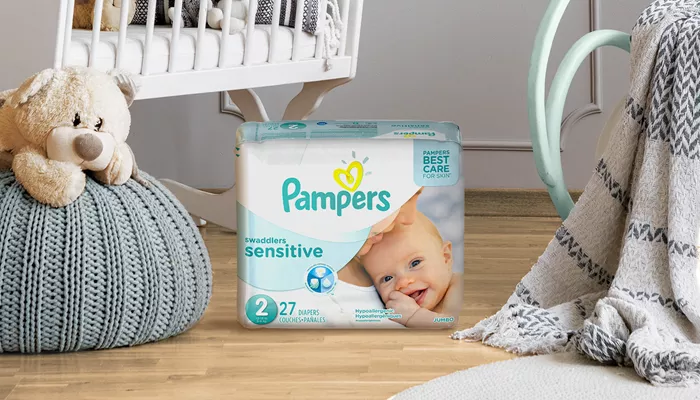Pampers Swaddlers are among the most popular diaper choices for newborns and infants. Many parents trust this brand for its softness, absorbency, and overall comfort for their babies. But a crucial question arises: Are Pampers Swaddlers toxic? This article delves into the composition, safety, and concerns associated with Pampers Swaddlers to provide a comprehensive understanding.
What Are Pampers Swaddlers Made Of?
Main Components
Pampers Swaddlers are made primarily of a combination of synthetic and natural materials. The outer cover is often composed of polyethylene and polypropylene, which are types of plastic. These materials are chosen for their durability, flexibility, and resistance to moisture, ensuring that the diaper remains intact and dry.
Absorbent Core
The absorbent core, which is the heart of the diaper, contains superabsorbent polymers (SAPs). SAPs are responsible for locking in moisture and keeping the baby’s skin dry. Additionally, the core includes wood pulp, which is used for its absorbent properties and contributes to the overall effectiveness of the diaper.
Lotion and Fragrance
Some Pampers Swaddlers are treated with a mild lotion to protect the baby’s skin from irritation. This lotion typically includes ingredients like petrolatum and aloe, which are known for their skin-soothing properties. Additionally, Pampers Swaddlers may have a light fragrance to mask odors, although fragrance-free options are also available.
Chemical Concerns in Pampers Swaddlers
Dioxins
One of the most common concerns associated with disposable diapers, including Pampers Swaddlers, is the presence of dioxins. Dioxins are a group of chemical compounds that can be produced during the bleaching process of the wood pulp used in diapers. These compounds are considered environmental pollutants and have been linked to various health issues, including cancer.
Phthalates
Phthalates are chemicals used to increase the flexibility of plastics. They are often found in the manufacturing process of diapers, including the plastic components of Pampers Swaddlers. Phthalates have been scrutinized for their potential role as endocrine disruptors, which can interfere with hormone function.
Volatile Organic Compounds (VOCs)
Volatile Organic Compounds (VOCs) are chemicals that can easily become vapors or gases. They are found in many consumer products, including some diapers. VOCs have been associated with respiratory issues and other health problems, particularly when exposure is prolonged.
SEE ALSO: Are Pampers Pure Diapers Biodegradable?
Are Pampers Swaddlers Safe for Babies?
Regulatory Oversight
Pampers, as a brand under Procter & Gamble, adheres to strict safety and quality standards. The materials used in Pampers Swaddlers are tested for safety and efficacy, ensuring that they do not pose significant health risks to babies. Additionally, the production processes are regulated by agencies such as the U.S. Food and Drug Administration (FDA) and the Environmental Protection Agency (EPA), which monitor the use of potentially harmful chemicals.
Research and Studies
Several studies have examined the safety of disposable diapers, including Pampers Swaddlers. While some research has raised concerns about the presence of chemicals like dioxins and phthalates, the levels found in diapers are generally considered to be low and within safe limits. It is important to note that no conclusive evidence directly links the use of Pampers Swaddlers to serious health issues in infants.
Parental Reports and Anecdotal Evidence
While most parents report positive experiences with Pampers Swaddlers, there have been some anecdotal reports of skin irritation and allergic reactions. These reactions are typically mild and may be due to individual sensitivities to certain materials or chemicals in the diaper. In such cases, switching to a different diaper brand or a fragrance-free version of Pampers Swaddlers may alleviate the issue.
Environmental Impact of Pampers Swaddlers
Landfill Contribution
Disposable diapers, including Pampers Swaddlers, are a significant contributor to landfill waste. They are not biodegradable, and it can take hundreds of years for a single diaper to break down. The environmental impact of this waste is a growing concern, especially considering the high volume of diapers used daily around the world.
Sustainable Alternatives
To address environmental concerns, some parents opt for eco-friendly diaper options. These alternatives may use biodegradable materials or offer reusable diapering solutions. While Pampers does not currently offer a fully biodegradable diaper, they have made strides in reducing the environmental footprint of their products by improving manufacturing processes and exploring sustainable materials.
Alternatives to Pampers Swaddlers
Organic and Eco-Friendly Diapers
For parents concerned about potential toxins in Pampers Swaddlers, organic and eco-friendly diapers may offer a safer alternative. These diapers are typically made from natural, biodegradable materials and are free from chlorine, fragrances, and other potentially harmful chemicals.
Cloth Diapers
Cloth diapers are another alternative that eliminates many of the chemical concerns associated with disposable diapers. They are reusable, reducing environmental impact, and can be washed and sanitized between uses. However, they require more effort in terms of laundering and maintenance.
Fragrance-Free and Hypoallergenic Options
For babies with sensitive skin or allergies, fragrance-free and hypoallergenic versions of disposable diapers, including those offered by Pampers, are available. These options minimize the risk of irritation by excluding unnecessary chemicals and additives.
Conclusion
Pampers Swaddlers are widely used and trusted by parents for their effectiveness in keeping babies dry and comfortable. While concerns about potential toxins in disposable diapers are valid, the levels of harmful chemicals in Pampers Swaddlers are generally considered to be low and within safety guidelines. Regulatory oversight and testing ensure that these diapers are safe for use by infants.
However, for parents who are particularly concerned about chemical exposure or environmental impact, exploring alternative diapering options, such as organic, eco-friendly, or cloth diapers, may be a worthwhile consideration. Ultimately, the choice of diaper should be based on individual preferences, baby’s needs, and a careful consideration of the available information regarding safety and environmental impact.


